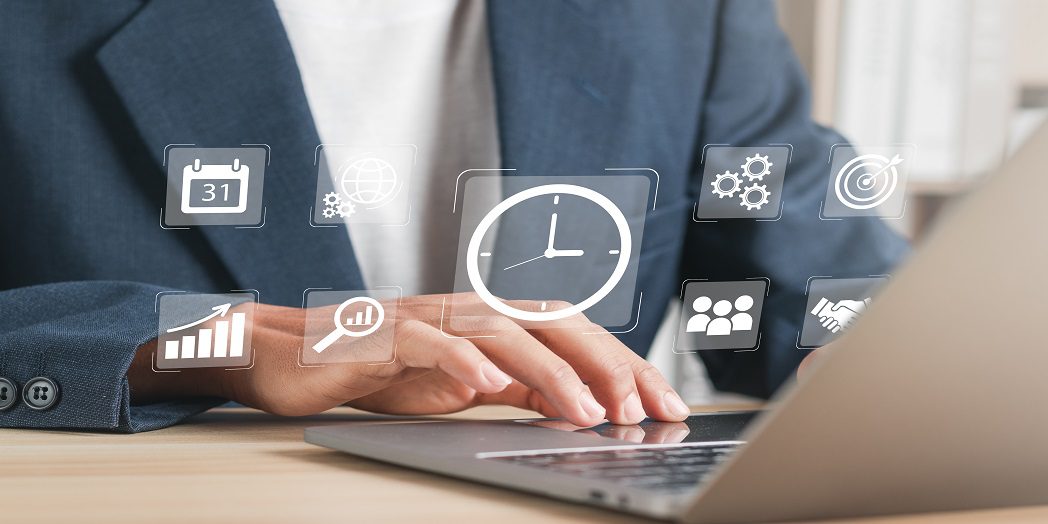Imagine waking up full of energy, going after your goals with excitement, talking to people easily, and dealing with problems calmly. That’s what Personal Effectiveness can do.
What is Personal Effectiveness?
In a nutshell, Personal Effectiveness means making the best decisions in any situation. Personal effectiveness is not just a trendy word; it’s an important part of having a fulfilling life. In this blog, we’ll explain seven ways to do this and make your life better. These aren’t just ideas; they’re proven ways to make you good at doing things for yourself.
Set Clear Goals
Imagine going on a trip without knowing where you’re going. That can be confusing. Well, goals are like a GPS for your life. They help you reach your dreams. Conversely, without goals, you might wander around without a clear direction. Thus, using up your time and energy. Therefore, goals motivate you to turn vague dreams into clear targets. Thus, lighting up the path to your effectiveness.
SMART Goals: Specific, Measurable, Achievable, Relevant, Time-Bound
Think of SMART goals as the architects of your dreams. Specific goals make your vision clear, and measurable goals show your progress. Meanwhile, achievable goals prevent frustration, and relevant goals connect with your interests. Finally, time-bound goals create a sense of urgency. For example, instead of saying, “I want to get fit,” you can say, “I will run a 5k marathon in six months, training three times a week.”
Setting Long-term and Short-term Goals
Long-term goals are like lighthouses in the distance, showing you where to go. They give your life direction and purpose. These are the big dreams that keep you up at night. In contrast, short-term goals are like stepping stones. They help you get from where you are now to where you want to be. So, by breaking big tasks into smaller steps, you can celebrate even small wins. Hence, keeping you motivated for your effectiveness.
Prioritise Tasks for Best Results
Your to-do list is like a buffet; you can’t eat everything at once. However, prioritisation is like your plate, helping you savour each task individually. Thus, letting you focus on important things. In turn, this saves energy for what really matters.

Eisenhower Matrix: Urgent vs. Important Tasks
The Eisenhower Matrix, created by President Eisenhower, sorts tasks into four categories.
- Urgent and Important:These tasks demand immediate attention. So, address them promptly to prevent crises.
- Important but Not Urgent:These tasks require strategic planning. Thus, allocate time for thoughtful execution.
- Urgent but Not Important: Give these tasks to others when possible. Therefore, freeing up your time for higher-priority activities.
- Not Urgent and Not Important: Drop or minimise time spent on these tasks. In turn, avoiding unnecessary distractions and focus on what truly matters.
Time Blocking Techniques
Time blocking is a strategy where you assign specific times to different activities in your day. This habit improves your ability to focus on the tasks at hand. Additionally, it eliminates multitasking and distractions. Therefore, it ensures that important tasks receive the attention it deserves. By using time blocking, you can organise your day more effectively. In turn, it improves your personal effectiveness.
Develop Healthy Habits
Habits are important for how things turn out in your life. Think about the things you do every morning – they can either help you succeed or hold you back. Therefore, Good and bad habits both shape what you do each day. So, there’s this loop thing with habits: something triggers you to do a routine, and then you get some kind of reward. This loop can help you reach your goals or stop you from moving forward.
So, if you understand how this loop works, you can change your habits and swap out the bad ones for good ones. Thus, greatly improving your personal effectiveness.
Creating Constructive Daily Routines
Doing positive things every day sets the tone for how your day goes. Moreover, it can even be the simplest thing. Namely, stretching in the morning, writing in a journal, or having a healthy breakfast. These routines are like anchors that keep you steady when life gets crazy. So, imagine starting your day with some exercise, then a good breakfast, and a moment to appreciate things. These practices fill your day with good vibes, strength, and a sense of purpose.
Time Management Skills for Personal Effectiveness
Time is a constant that waits for no one and cannot be reversed. So, managing it efficiently is a great sign of personal effectiveness. Well, there are many ways to do just that. Namely, one way is to use the two-minute rule: handle tasks that take less than two minutes immediately. The 80/20 principle suggests that 20% of your most important efforts contribute to 80% of your results. Hence, prioritise these impactful tasks. Conduct a time audit to understand how you use your time.

Avoiding Procrastination
Procrastination hinders progress and steals time. One way to tackle this is to break tasks into smaller parts. Hence, making it feel more like an achievement whenever you complete a small task. Thus, motivating you to tackle larger challenges. Also, visualisation can be powerful. For example, completing a task and drawing inspiration from future success. Be mindful of procrastination’s impact and use strategies to overcome it.
Pomodoro Technique: Work in Short Bursts
The Pomodoro Technique divides your day into manageable chunks. Work for 25 minutes, then take a five-minute break. Then, repeat this four times. Afterwards, take a more extended break. This approach aligns with the human attention span. Thus, preventing burnout and boosting productivity. So, this method turns your work sessions into sprints that refresh and motivate you.
Improve Communication Skills
Good communication is the foundation of strong relationships. Imagine talking with someone, and everything they say makes perfect sense. Furthermore, you completely understand each other and can speak freely. Sounds amazing, right? Well, this involves not just talking but also your body language. Through communicative effectiveness, you can make better connections with people. Also, you can solve problems and even inspire those around you. Therefore, improving your overall personal effectiveness.
Active Listening Techniques
Active listening goes beyond just hearing words. Thus, it involves emotions, intentions, and unspoken messages. For example, you can paraphrase and summarize what the speaker is saying as a reply. Thus, showing your involvement and making it clear you understand them. Furthermore, you can use open-ended questions to prompt more detailed responses. Thus, improving the conversation for both sides. Through this, you understand the speaker’s point of view and value their emotions. Thus, building trust and rapport.
Assertiveness and Conflict Resolution
Assertiveness involves finding a middle ground between passive agreement and aggressiveness. Thus, letting you speak your mind. However, you still respect the boundaries of others. Conflict resolution is an important part of talking. It requires empathy, active listening, and a focus on finding solutions. Imagine a conversation where clear speech replaces confusion, turning conflicts into agreements that benefit everyone.
Following these speaking techniques can greatly improve your communication effectiveness. Therefore, improving your overall personal effectiveness.
How Decision-Making is Important for Personal Effectiveness
Decision-making is like walking through a complex maze. However, there are two effective tools: the pros and cons list and the decision matrix. The list method means listing the advantages and disadvantages of each option. Thus, gaining clarity on which option is your best. The decision matrix is a systematic evaluation of alternatives based on predefined criteria. It acts as your compass, guiding you toward the best choice. Therefore, you can use a mix of these two methods and improve your personal effectiveness in making decisions.
Overcoming Decision-making Challenges
Decision-making is riddled with challenges, from fear of failure to analysis paralysis. Embrace uncertainty as a part of life’s tapestry. Failure is not a verdict but a detour, an opportunity to learn and grow. Trust your instincts, honed by experience and wisdom. Visualisation can aid your decision-making process; imagine the outcomes of different choices, allowing your intuition to guide you toward the most aligned path.
Trusting Your Intuition
Intuition, often dismissed as guesswork, is an important part of subconscious wisdom. Build a relationship with your intuition through mindfulness and self-reflection. Acknowledge its whispers, especially in moments of uncertainty. While data and logic provide valuable insights, your intuition adds a layer of depth, guiding you toward decisions that resonate with your authentic self.
Through these decision-making skills, you can greatly improve your personal effectiveness.
Build Resilience and Adaptability
Change is a key constant in life, a river that flows regardless of our resistance. Imagine standing at its banks, not as a victim but as a skilled navigator. Embrace change as a force of nature, an opportunity for growth and evolution. Change signifies progress, transformation, and renewal. By accepting change as a natural part of life, you harness its energy to fuel your personal effectiveness.
Developing Resilience Skills
Resilience, akin to a sturdy tree bending but not breaking in a storm, is your armour against adversity. Imagine a life where setbacks are not stumbling blocks but stepping stones. Resilience is cultivated through self-compassion, acceptance of failures, and the ability to adapt. Surround yourself with a supportive network, draw strength from within, and view challenges as opportunities to learn and strengthen your resolve. Picture yourself emerging from life’s challenges stronger, wiser, and more resilient.
Learning from Failures and Challenges
Failures are not endpoints but chapters in your story of growth. Imagine a narrative where setbacks are plot twists, not tragedies. Analyse your failures, not to dwell on blame but to extract lessons. What went wrong? What can be done differently? Failure is a feedback mechanism, illuminating areas for improvement. View failures as guides rather than condemnations. Therefore, you can transform setbacks into invaluable learning experiences. Imagine a life where every challenge is a springboard, hosting you toward better personal effectiveness.
Conclusion
Think of your success like a beautiful picture. Your actions and choices are like colourful threads that make the picture. Otherwise, you can picture your life as a blank canvas, ready for you to paint with your goals and determination. If you use these personal development skills, you’re starting a journey that changes your goals from ideas to things you can achieve. Furthermore, your problems become chances for you to get better, not things holding you back.
So, imagine a life where personal effectiveness is not just something you hope for but something happening right now. Start working on yourself and see personal and social development. Let these strategies show you the path to a future filled with success, satisfaction, and always doing your best!





